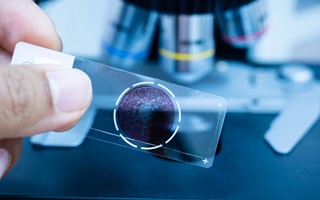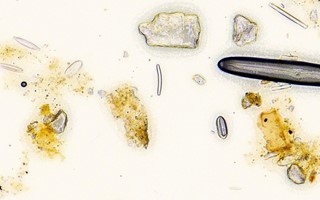News January 19, 2022
Although a forensic pathologist’s role is typically associated with establishing cause of death, their expertise also extends to commentary upon the nature of injury causation in the living. They help to identify the degree of force used, whether injuries sustained are consistent with accounts and, when a defendant is charged with attempted murder, determining if the injury was caused with intention.
Establishing cause of injury and death can be considered a two-man job as pathologists often rely upon medical evidence submitted by clinicians in the form of witness statements. However, the medical interpretation of injuries can vary in precision and complexity from a forensic pathologist’s explanation of how those same injuries occurred.
Clinical Medical Evidence
It is incredibly common for clinicians treating patients in the first instance to be asked for a professional statement. In cases where a patient has sustained injuries and they are being treated, it is important to the investigation of how the injuries were sustained to get an initial assessment of what has happened and what is likely to be the outcome. We will also consider whether we are looking at a case of necessary arrest or whether it was simply an unfortunate accident.
It is important to be aware that there is very little teaching in forensic pathology or medicolegal aspects of practicing as a doctor at undergraduate level. The majority of practicing doctors do not receive any training, experience or exposure to this aspect of the job unless they specifically choose to do it.
Because of this, pathologists are often provided with pro-forma, “fill in the blanks” statements which talk about who the doctor is, when they saw the patient and quite often simply that their injuries are consistent with a claim of assault. In the current climate they are often provided as streamlined forensic reports (SFRs). As many people in the forensic setting are aware, it explicitly states that SFRs are not for use in court.
It is incredibly helpful to pathologists when assessing witness statements when a doctor confirms their level of practice, i.e., a foundation year two doctor. For example, in cases where we are made aware that the report was not provided by a consultant, we know about the level of experience and expertise that this doctor has.
But quite often pathologists simply don’t know. The doctor in question may have been a consultant vascular surgeon for twenty years, or they may have been on their first day of the job. We can of course search the Medical Register or the General Medical Council (GMC), both of which have an online record of all registered practitioners. If you have a GMC number or a full name you can look them up, but it is far easier if a doctor states what their experience level or expertise is.
Because of this, the witness statement may not have been compiled by someone who knows the requirements for an opinion in court. This is particularly evident when a witness statement doesn’t provide a proper assessment. For example, it could contain claims that the injuries observed are consistent with the reported incident. In the mind of a forensic pathologist, to say that injuries are consistent with a particular incident, that is an opinion expressed. Therefore, the statement should include all the provisos that are required for an expert statement. If that is the evidence that is being provided to a jury, these claims cannot go unchallenged. Otherwise, the jury would think that is a very strong and robust statement regarding the incident.
The Istanbul Protocol
This is an indicator of the degree of certainty with which an opinion is expressed. Pathologists rely heavily upon this when assessing injury causation.
There are certain terminologies expressed within the protocol that can prove helpful to forensic pathologists. One of those that our pathologists often encounter is ‘consistent with’. In the Istanbul protocol, this means that the lesion could have been caused by the mechanism/pathology described, but it is non-specific and there are many other possible causes.
For example, a footwear mark on the chest would be considered a specific injury. A black eye is not a specific injury – it could be caused by direct blow, falling, a forehead injury with blood trickling down under the skin into the eye socket, or by a fracture to the orbital roof. There are a multitude of possibilities that could explain how this injury was sustained.
When looking at a number of individual injuries collectively, pathologists gain a sense of the totality of what they can see. Each of the individual elements alone are consistent with a cause of death, but when looking at them all together they are far more than merely consistent with – they are indicative of. While individual features may be non-specific and have many possible causes, one of the things that is important for a forensic pathologist to do is to consider them collectively and look at the pattern and context.
When it comes to evidence from clinicians, if tests undertaken or the treatment chosen is up for question, you need the opinion of an expert in that field. By way of example, it is impossible for a forensic pathologist to undertake clotting tests on a deceased individual. You cannot look at the blood and determine how effective that person’s clotting was or wasn’t. However, if you have results from when that person was alive, a haemotologist might be very useful in assessing whether there was a clotting problem – and indeed what the cause of that problem was.
Take the case of a stabbing, for example. If you want to know the specific dynamics about how a stabbing occurred, a pathologist is the person who will answer that… and hopefully answer it very effectively. If you want to know whether the stab wound could have been treated, whether it was treated too slowly or whether it was treated in the right way, ask a trauma surgeon.
One of our forensic pathologists recently received a statement from a clinician in an attempted murder case. The clinician attested that the stab wound had reached the spine. If the knife had reached the spine, it would certainly have been forceful enough to penetrate the skin and pass through the body onwards to the back. If it penetrated the solid bone of the spine, this tells us crucial information about the amount of force involved.
Our pathologist asked the police to go back to the surgeon to find out whether there was injury to the spine itself. The response from the surgeon was that this doesn’t tell you anything about force as it’s not a blunt impact. While it may not give anything away to a clinician about force, it does however inform a forensic pathologist about the level of force involved.
In this case, the person who had been stabbed survived their injury, but the only reason they survived it was because of the surgeon’s efforts to treat the person’s injury. Therefore, we deferred entirely to the clinician on this aspect of the case. But a forensic pathologists’ role and interpretation is a different one.
Clinical vs Forensic Documentation
The other thing to bear in mind with clinical documentation is that it is often done, as can be entirely understood, in a bit of a rush.
If a doctor is presented with a stab wound to the chest then measuring it, putting a scale on it, looking at the size of the stab wound on the surface and how long it may be with the edges held together (which may give you a different interpretation of the size of the blade) is far less important than making sure that it hasn’t struck a very large blood vessel and that the patient isn’t going to die in front of them.
A pathologist does not expect a doctor in A&E to undertake a forensic level of documentation and interpretation of the injuries present. It is the clinician’s role them to assess them, to look at the injuries most likely to have serious adverse outcomes and treat them accordingly in an appropriate time.
A forensic pathologist has more time to look at the photographs, to expand them and to undertake thorough examination with regards to the placement and severity of the injuries. They will then form a view as to what events are likely to have transpired to form those injuries.
Forensic Pathology Expertise
Forensic Access works with some of the UK’s most experienced Home Office Pathologists, as well as offering the complete range of experts for more specialist cases.
To find out more about the forensic services that we offer, please telephone 01235 774870 to speak with a member of our team, or fill-in our online contact form.


